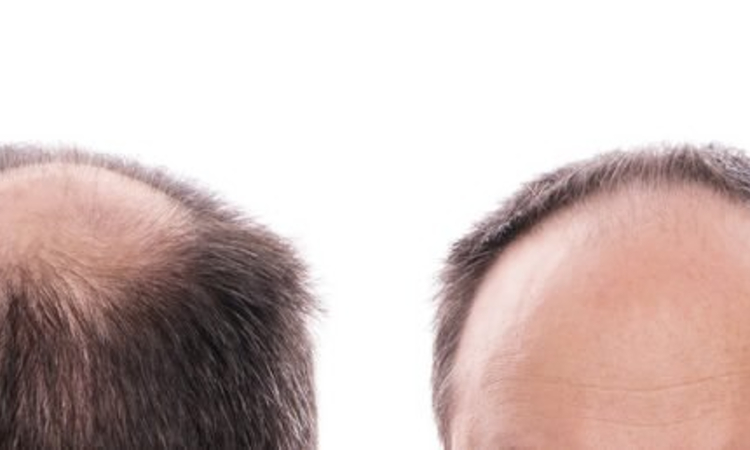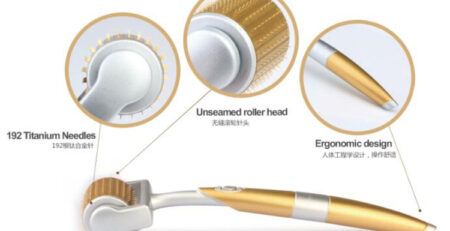How Dermarollers Can Help Prevent Hair Loss?
Dermarolling therapy is widely used in a lot of skin care and cosmetic problems. Today, a lot of studies have explored on the role of dermarolling therapy in preventing hair loss particularly in treating alopecia areata.
There are many treatment method used in the management of alopecia areata. Each of the treatment modality were able to provide an efficacy and safety profile. [1] Dermarolling therapy is a newer approach used in treating hair loss.
Studies have shown that microneedling with triamcinolone application is effective in treating alopecia areata.2
What is alopecia areata?
An individual with alopecia areata usually presents with patchy hair loss on the frontal and vertex areas of the scalp. Frontal hair loss is evident in one year while vertex hair loss is observed for almost six months. The person with alopecia areata doesn’t have any systemic illness that may induce hair loss.2
Alopecia areata is a chronic and organ-specific autoimmune disease that primarily affects the hair and the nails. [2] This condition is difficult to manage. In fact, it is treated by using topical steroid which are delivered intralesionaly which is very painful particularly when use in large patches.
How dermarolling therapy works in preventing patchy hair loss?
If you observed some patchy hair loss in your scalp, you may want to consider having a dermarolling therapy. The procedure is relatively easy to perform. The dermatologist will used dermaroller having 192 needles of 1.5 mm in length.
During the procedure a topical application of triamcinolone acetonide is used which is applied on patchy hair loss before and after the dermarolling treatment. The dermarollers are move in diagonal, vertical and horizontal directions for four to five times per direction after the topical application. The procedure may result to pin point bleeding which is followed by an application of triamcinolone.
The procedure is relatively painless so anesthesia may not be given. It may take around three sessions with three weeks interval before you can actually see the results. But for every session, you may already notice the improvement.
Patients who had undergone dermarolling therapy had observed an excellent hair growth after three weeks of the last session. They reported that the procedure is painless and there are no any side effects noted during or after the procedure. There is also no recurrence whatsoever noted after three months of the treatment.
This shows that microneedling is indeed a promising treatment modality in managing alopecia areata. The effects are favorable considering that there is no recurrence and the effects are for long-term.
Recent studies have shown that dermarolling therapy is effective for hair loss.2 The effectiveness can be probably due to the stimulation of stem cells and dermal papilla. The dermarolling procedure itself also increases the blood supply to the hair follicles.
Thus, there are more nutrients that are carried into the hair that provided a favorable environment for the follicles hence, the stimulation of healthy hair growth. Further theories suggest that the micro injury helps in the recruitment of growth factors that induce hair growth. This is why; dermarolling therapy is now being used for the treatment of alopecia areata.
Dermarolling and Triamcinolone: An Ideal Combo
Dermarolling therapy with triamcinolone acetonide topical application is an ideal duo in treating alopecia areata. The dermarolling therapy enhances the absorption of the topical drug which is known to have immunomodulatory effects. 2 More so, applying steroid after the dermarolling procedure helps in the painless and uniform absorption of the drug.
Studies have shown that this treatment combo provided satisfactory result. The favorable advantage of this combination treatment is that it induces collagen production. Dermarolling may counteract the possibility of atrophy effect caused by triamcinolone.
A number of studies have shown that dermarolling therapy in combination with a topical agent is a promising and safe tool in stimulating hair growth. It is particularly effective in treating alopecia areata. However, despite its effectiveness, dermaroling treatment is not yet standardized in terms of the interval and duration of subsequent sessions.
Dermarolling Therapy an Ideal Alternative Treatment for Resistant Cases of Patchy Hair Loss
The most probable use of dermarolling therapy is for patients with resistance to both topical and systemic treatment for inducing hair growth on cosmetic region such as the scalp. 1 If the traditional treatment fails, dermarolling therapy is a very good alternative treatment option to consider.
Studies have shown that there are almost 90% improvements seen, f it is used to treat patchy hair loss which can be observed after undergoing four dermarolling sessions.1 More so, there are lesser side effects noted.
Dermarollers an Effective Treatment for Hair Loss
A lot of studies are being done to explore the effects of dermarolling therapy on various skin and cosmetic conditions. The growing studies are unanimous in providing strong evidence that proves the efficacy of dermarolling treatment. In due time, the treatment procedure in terms of appropriate duration and interval will be standardized.
Thus, it is not surprising why dermarolling therapy is one of the popular treatment modalities nowadays. It can be used in wide array of applications with very promising results. People suffering from hair loss will benefit much from this new treatment modality.
They no longer need to despair if the topical treatment fails because they can turn to dermarolling therapy for help. The effects may take weeks or months to be visible, but the effects are long-term and there is no recurrence of patchy hair loss.
Bibliography
[1]Suresh H Deepak and Suryanarayan Shwetha1. (2014). Scalp Roller Therapy in Resistant Alopecia Areata. J Cutan Aesthet Surg. , 61–62.
[2] BS Chandrashekar, Vani Yepuri,1 and Venkataram Mysore1. (2014). Alopecia Areata—Successful Outcome with Microneedling and Triamcinolone Acetonide. J Cutan Aesthet Surg. , 63–64.












